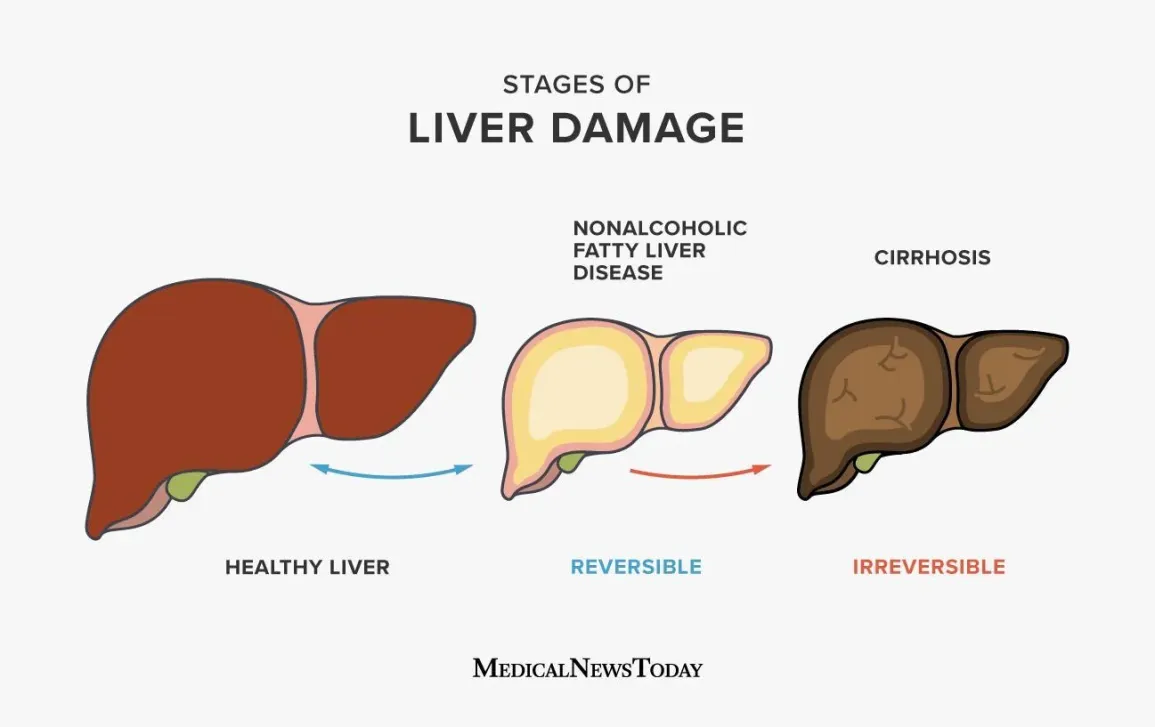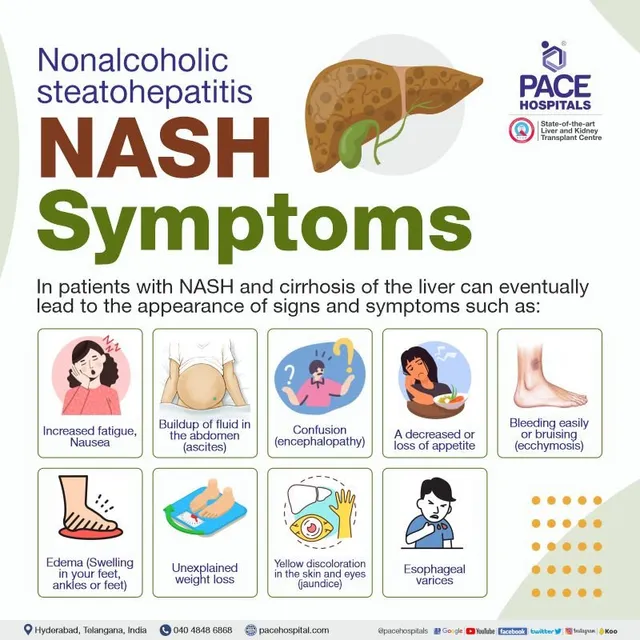Welcome to the world of NASH reversal! Non-alcoholic steatohepatitis (NASH) is a progressive liver disease characterized by the accumulation of fat in the liver, inflammation, and damage. But here’s the good news: NASH can be reversed! In this article, we will delve into the concept of NASH reversal, explore natural strategies to improve liver health, and shed light on lifestyle modifications and treatments that can help you reclaim a healthy liver. So, buckle up and get ready to embark on a journey toward a revitalized liver!
What is NASH?
NASH, which stands for non-alcoholic steatohepatitis, is a type of liver disease. It is commonly referred to as the more severe form of non-alcoholic fatty liver disease (NAFLD). NASH occurs when there is fat buildup in the liver (steatosis) along with inflammation and liver cell damage.
Here’s a breakdown of NASH:
- Non-Alcoholic: Unlike alcoholic liver disease, NASH occurs in individuals who do not consume excessive amounts of alcohol. It is primarily associated with metabolic factors such as obesity, insulin resistance, high cholesterol, and diabetes.
- Steatohepatitis: “Steato” refers to fat, and “hepatitis” refers to inflammation of the liver. In NASH, the accumulation of fat in the liver leads to inflammation, which can cause damage to liver cells. This inflammation and damage can progress to more severe liver conditions, such as fibrosis, cirrhosis, and even liver cancer in some cases.
- Risk Factors: NASH is often linked to various risk factors, including obesity, sedentary lifestyle, unhealthy eating habits (particularly high intake of processed foods and added sugars), insulin resistance, type 2 diabetes, high blood pressure, high cholesterol levels, and metabolic syndrome.
- Symptoms: NASH may not present with specific symptoms in the early stages. However, as the disease progresses, individuals may experience fatigue, abdominal discomfort, weight loss, jaundice (yellowing of the skin and eyes), and signs of advanced liver disease, such as fluid accumulation in the abdomen and mental confusion.
- Diagnosis: NASH is typically diagnosed through a combination of medical history evaluation, physical examination, blood tests (such as liver function tests and markers of liver inflammation), imaging tests (such as ultrasound, CT scan, or MRI), and sometimes a liver biopsy to assess the extent of liver damage.
- Treatment and Management: The primary approach to managing NASH involves lifestyle modifications aimed at reducing liver fat, inflammation, and further liver damage. This includes adopting a healthy diet, engaging in regular physical activity, achieving and maintaining a healthy weight, managing underlying medical conditions, and avoiding alcohol. In some cases, medications may be prescribed to manage specific aspects of the disease, but there is no specific medication approved for NASH reversal.
It’s important to note that NASH is a progressive condition, and its management focuses on preventing further liver damage and promoting liver health through lifestyle changes. Early detection, diagnosis, and intervention are crucial in halting or even reversing the progression of the disease.
Can NASH reversal be possible?
- Understanding NASH Reversal: NASH reversal refers to the process of improving and restoring liver health by addressing the underlying causes and contributing factors of NASH. While NASH is a complex condition, research has shown that lifestyle modifications, dietary changes, and targeted treatments can significantly reduce liver fat, inflammation, and damage.
- Diet and Nutrition for NASH Reversal: A balanced and nutrient-rich diet plays a crucial role in NASH reversal. Some key dietary strategies include:
- Consuming a Plant-Based Diet: Emphasize whole foods such as fruits, vegetables, whole grains, legumes, and healthy fats like avocados and nuts. These foods are rich in antioxidants, fiber, and essential nutrients that promote liver health.
- Limiting Added Sugars and Refined Carbohydrates: Reduce or eliminate sugary beverages, processed snacks, and foods high in refined carbohydrates. These foods contribute to liver fat accumulation and insulin resistance.
- Including Lean Protein: Choose lean protein sources such as fish, poultry, tofu, and legumes. Protein supports liver health, aids in repairing liver cells, and helps maintain muscle mass.
- Avoiding Saturated and Trans Fats: Minimize the intake of saturated fats found in red meat, full-fat dairy, and fried foods. Also, steer clear of trans fats commonly found in processed and packaged foods. Opt for healthier fats like olive oil and avocados.
- Physical Activity for NASH Reversal: Regular physical activity is vital for NASH reversal. Exercise offers numerous benefits for liver health, including:
- Reduction of Liver Fat: Physical activity helps burn excess calories and reduces liver fat accumulation.
- Improved Insulin Sensitivity: Exercise enhances insulin sensitivity, which is crucial for managing blood sugar levels and reducing the risk of metabolic disorders.
- Enhanced Overall Liver Function: Physical activity improves blood flow to the liver, promoting detoxification and optimal liver function.
- Weight Management: Exercise supports weight loss and weight maintenance, which are essential for NASH reversal.
- Weight Loss and NASH Reversal: Weight loss plays a significant role in NASH reversal, especially for individuals who are overweight or obese. Losing excessweight can:
- Reduce Liver Fat: Weight loss leads to a decrease in liver fat accumulation, thereby improving liver health.
- Decrease Inflammation: Weight loss reduces inflammation in the liver, preventing further damage and promoting healing.
- Improve Insulin Sensitivity: Shedding extra pounds improves insulin sensitivity, helping to manage blood sugar levels and reduce the risk of metabolic disorders.
- Lower Disease Progression: Weight loss can slow down the progression of NASH and reduce the risk of developing advanced liver conditions.
- Avoidance of Alcohol for NASH Reversal: Alcohol consumption can worsen liver damage in NASH. It is important to either eliminate or significantly reduce alcohol intake to promote NASH reversal. Even moderate alcohol consumption can have detrimental effects on liver health, so it’s best to err on the side of caution and avoid alcohol altogether.
- Medications and Supplements for NASH Reversal: In some cases, healthcare providers may prescribe medications or recommend liver-supporting supplements to aid in NASH reversal. These interventions can help reduce liver inflammation, improve liver function, and support overall liver health. However, it is essential to consult with a healthcare professional before starting any medications or supplements to ensure safety and efficacy.
- Management of Medical Conditions for NASH Reversal: NASH is often associated with underlying medical conditions such as diabetes, high blood pressure, and high cholesterol. Proper management of these conditions through medication, lifestyle modifications, and regular monitoring can significantly contribute to NASH reversal. Treating these medical conditions helps improve overall liver health and reduces the risk of disease progression.
Table: Comparing Lifestyle Modifications and Treatments for NASH Reversal
| Strategies | Description | Benefits |
|---|---|---|
| Diet and Nutrition | Focusing on a balanced, nutrient-rich diet | Reduces liver fat and inflammation |
| Physical Activity | Engaging in regular exercise and movement | Improves liver health and insulin sensitivity |
| Weight Loss | Achieving and maintaining a healthy weight | Reduces liver fat and inflammation |
| Avoidance of Alcohol | Eliminating or reducing alcohol consumption | Reduces liver inflammation and damage |
| Medications and Supplements | Prescribed medications and liver-supporting supplements | May aid in reducing liver inflammation and improving liver health |
| Management of Medical Conditions | Treating underlying medical conditions such as diabetes, high blood pressure, and high cholesterol | Enhances overall liver health and reduces disease progression |
Conclusion:
NASH reversal is not an impossible feat. By implementing lifestyle modifications, adopting a liver-friendly diet, engaging in regular physical activity, achieving and maintaining a healthy weight, and addressing underlying medical conditions, you can reclaim your liver health naturally.
Remember, NASH reversal requires a holistic approach and a commitment to long-term changes. So, take charge of your liver health, embrace the power of lifestyle modifications, and pave the way for a healthier, happier liver. Your liver will thank you!
Originally posted 2023-05-25 21:07:45.



